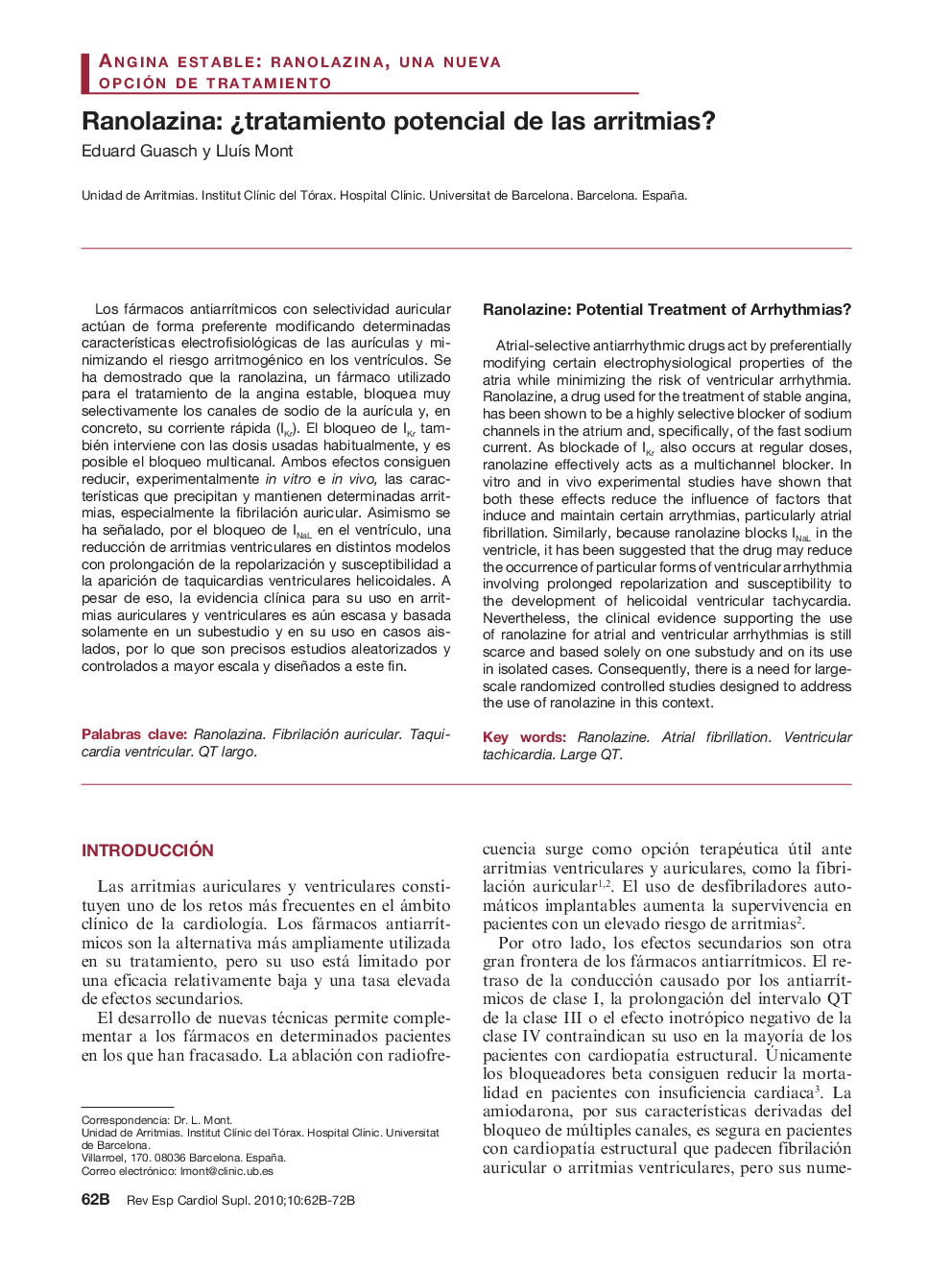| Article ID | Journal | Published Year | Pages | File Type |
|---|---|---|---|---|
| 3019562 | Revista Española de Cardiología Suplementos | 2010 | 11 Pages |
Los fármacos antiarrítmicos con selectividad auricular actúan de forma preferente modificando determinadas características electrofisiológicas de las aurículas y minimizando el riesgo arritmogénico en los ventrículos. Se ha demostrado que la ranolazina, un fármaco utilizado para el tratamiento de la angina estable, bloquea muy selectivamente los canales de sodio de la aurícula y, en concreto, su corriente rápida (IKr). El bloqueo de IKr también interviene con las dosis usadas habitualmente, y es posible el bloqueo multicanal. Ambos efectos consiguen reducir, experimentalmente in vitro e in vivo, las características que precipitan y mantienen determinadas arritmias, especialmente la fibrilación auricular. Asimismo se ha señalado, por el bloqueo de INaL en el ventrículo, una reducción de arritmias ventriculares en distintos modelos con prolongación de la repolarización y susceptibilidad a la aparición de taquicardias ventriculares helicoidales. A pesar de eso, la evidencia clínica para su uso en arritmias auriculares y ventriculares es aún escasa y basada solamente en un subestudio y en su uso en casos aislados, por lo que son precisos estudios aleatorizados y controlados a mayor escala y diseñados a este fin.
Atrial-selective antiarrhythmic drugs act by preferentially modifying certain electrophysiological properties of the atria while minimizing the risk of ventricular arrhythmia. Ranolazine, a drug used for the treatment of stable angina, has been shown to be a highly selective blocker of sodium channels in the atrium and, specifically, of the fast sodium current. As blockade of IKr also occurs at regular doses, ranolazine effectively acts as a multichannel blocker. In vitro and in vivo experimental studies have shown that both these effects reduce the influence of factors that induce and maintain certain arrythmias, particularly atrial fibrillation. Similarly, because ranolazine blocks INaL in the ventricle, it has been suggested that the drug may reduce the occurrence of particular forms of ventricular arrhythmia involving prolonged repolarization and susceptibility to the development of helicoidal ventricular tachycardia. Nevertheless, the clinical evidence supporting the use of ranolazine for atrial and ventricular arrhythmias is still scarce and based solely on one substudy and on its use in isolated cases. Consequently, there is a need for largescale randomized controlled studies designed to address the use of ranolazine in this context.
